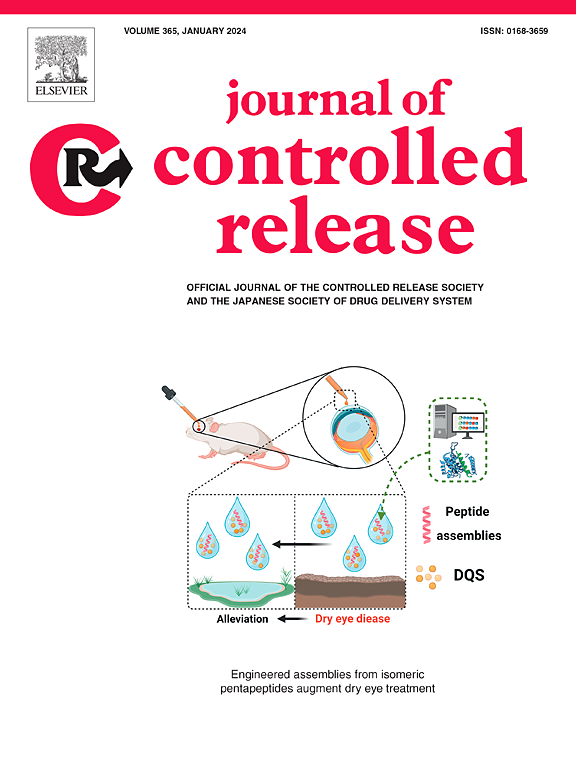Intracellular processing of DNA-lipid nanoparticles: A quantitative assessment by image segmentation
IF 10.5
1区 医学
Q1 CHEMISTRY, MULTIDISCIPLINARY
引用次数: 0
Abstract
Carriers for efficient delivery of nucleic acids, such as lipid nanoparticles (LNPs), have gained much attention for gene therapy applications. Intracellular processing of such nanocarriers is a complex mechanism comprising cellular internalization by endocytosis pathways, endosomal release into the cytosol, lysosomal degradation, and recycling. The endosomal escape rates of current formulations are considered low, and methods to reliably quantify endocytic events are not readily available. To address this shortcoming and to support the optimization of LNP formulations, the current study presents an automated live-cell imaging-based analysis method. Engineered HuH7 hepatic cell lines overexpressing fluorescent Galectin and Rab reporters together with lysosomal co-staining enabled qualitative and quantitative tracking of DNA-loaded LNPs. The use of two fluorescently labeled DNA-LNP formulations containing either SM-102 or ALC-0315 ionizable lipids revealed significant differences in endosomal escape rates and intracellular processing. Upon treatment, only subpopulations of the HuH7 target cells could be activated with respect to escape or recycling. Recycling inhibitors were therefore used to promote endosomal escape. These findings provide valuable insights into the timing and regulation of endocytic events, which will be instrumental to optimize therapeutic LNP formulations.

求助全文
约1分钟内获得全文
求助全文
来源期刊

Journal of Controlled Release
医学-化学综合
CiteScore
18.50
自引率
5.60%
发文量
700
审稿时长
39 days
期刊介绍:
The Journal of Controlled Release (JCR) proudly serves as the Official Journal of the Controlled Release Society and the Japan Society of Drug Delivery System.
Dedicated to the broad field of delivery science and technology, JCR publishes high-quality research articles covering drug delivery systems and all facets of formulations. This includes the physicochemical and biological properties of drugs, design and characterization of dosage forms, release mechanisms, in vivo testing, and formulation research and development across pharmaceutical, diagnostic, agricultural, environmental, cosmetic, and food industries.
Priority is given to manuscripts that contribute to the fundamental understanding of principles or demonstrate the advantages of novel technologies in terms of safety and efficacy over current clinical standards. JCR strives to be a leading platform for advancements in delivery science and technology.
 求助内容:
求助内容: 应助结果提醒方式:
应助结果提醒方式:


